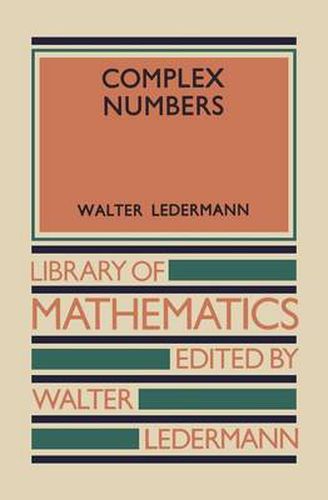Readings Newsletter
Become a Readings Member to make your shopping experience even easier.
Sign in or sign up for free!
You’re not far away from qualifying for FREE standard shipping within Australia
You’ve qualified for FREE standard shipping within Australia
The cart is loading…






This title is printed to order. This book may have been self-published. If so, we cannot guarantee the quality of the content. In the main most books will have gone through the editing process however some may not. We therefore suggest that you be aware of this before ordering this book. If in doubt check either the author or publisher’s details as we are unable to accept any returns unless they are faulty. Please contact us if you have any questions.
THE purpose of this book is to prescnt a straightforward introduction to complex numbers and their properties. Complex numbers, like other kinds of numbers, are essen tially objects with which to perform calculations a:cording to certain rules, and when this principle is borne in mind, the nature of complex numbers is no more mysterious than that of the more familiar types of numbers. This formal approach has recently been recommended in a Reportt prepared for the Mathematical Association. We believe that it has distinct advantages in teaching and that it is more in line with modern algebraical ideas than the alternative geometrical or kinematical definitions of v -1 that used to be proposed. On the other hand, an elementary textbook is clearly not the place to enter into a full discussion of such questions as logical consistency, which would have to be included in a rigorous axiomatic treatment. However, the steps that had to be omitted (with due warning) can easily be filled in by the methods of abstract algebra, which do not conflict with the ‘naive’ attitude adopted here. I should like to thank my friend and colleague Dr. J. A. Green for a number of valuable suggestions, especially in connection with the chapter on convergence, which is a sequel to his volume Sequences and Series in this Library.
$9.00 standard shipping within Australia
FREE standard shipping within Australia for orders over $100.00
Express & International shipping calculated at checkout
This title is printed to order. This book may have been self-published. If so, we cannot guarantee the quality of the content. In the main most books will have gone through the editing process however some may not. We therefore suggest that you be aware of this before ordering this book. If in doubt check either the author or publisher’s details as we are unable to accept any returns unless they are faulty. Please contact us if you have any questions.
THE purpose of this book is to prescnt a straightforward introduction to complex numbers and their properties. Complex numbers, like other kinds of numbers, are essen tially objects with which to perform calculations a:cording to certain rules, and when this principle is borne in mind, the nature of complex numbers is no more mysterious than that of the more familiar types of numbers. This formal approach has recently been recommended in a Reportt prepared for the Mathematical Association. We believe that it has distinct advantages in teaching and that it is more in line with modern algebraical ideas than the alternative geometrical or kinematical definitions of v -1 that used to be proposed. On the other hand, an elementary textbook is clearly not the place to enter into a full discussion of such questions as logical consistency, which would have to be included in a rigorous axiomatic treatment. However, the steps that had to be omitted (with due warning) can easily be filled in by the methods of abstract algebra, which do not conflict with the ‘naive’ attitude adopted here. I should like to thank my friend and colleague Dr. J. A. Green for a number of valuable suggestions, especially in connection with the chapter on convergence, which is a sequel to his volume Sequences and Series in this Library.